‘Sorry for throwing grenades in your cellar.’ The unusual fate of the first house liberated in D-Day beach landings
Their target was an elegant, two-story villa sitting solitary on a misty beach. No houses stood nearby, just minefields, military pillboxes and enemy machine gun posts.
It was D-Day, and on that overcast morning on June 6, 1944, 10 boats filled with Canadian troops crossed the English Channel’s choppy waters to head for the 1,500 yard stretch of Normandy coastline where the house was located.
These soldiers’ small part in the world’s largest seaborne invasion was to capture the coastal town of Bernieres-sur-Mer. Seizing the villa would be a key objective. Aerial photographs had led them to falsely believe that it was a railway station. Regardless of what it was, allied war planners wanted to use it as a lookout toward the sea once the beach was captured.
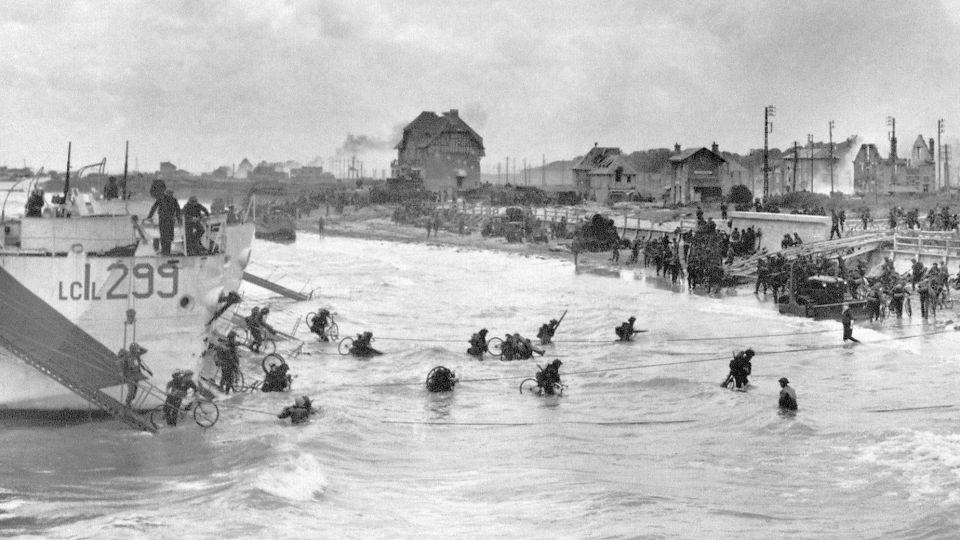
To get there, the troops would have to cross the open beach. It would be an assault landing, with almost nowhere to hide.
The troops hit the shore at 7:15 a.m. and were met by unrelenting machine gun and mortar fire. Within 20 minutes, the soldiers that had managed to survive the initial onslaught reached the villa and expelled the German troops inside. It was, in all likelihood, the first house to be liberated after the beach landings during Operation Overlord.
The cost was extreme. About 100 Canadians died on that beach in the first few minutes of the battle.
The villa, though riddled with bullet holes and other battle scars, was intact.
Eighty years later, the half-timbered home remains. It is called “La Maison de Canadiens” in French, or Canada House in English, and it is now a memorial dedicated to the Canadians who gave their lives to liberate France thanks to the work of one French couple.
Opening the door to strangers
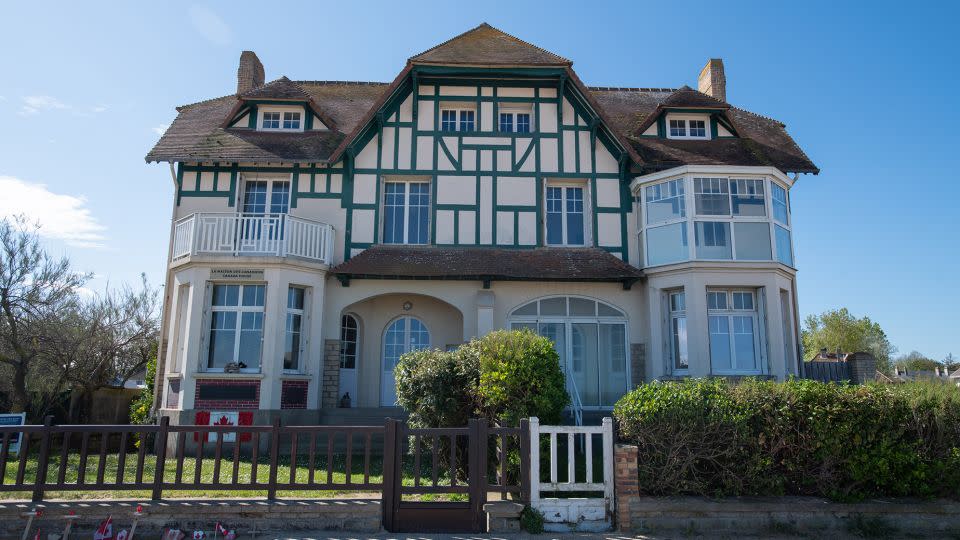
After Nicole and Herve Hoffer married in 1975 and then had children, they began spending more time at the family’s vacation home Bernieres-sur-Mer. Nicole noticed that people walking by on the boardwalk between the house and the beach often stopped to take photographs of the building. She asked her husband why, but he didn’t know.
The villa was constructed in 1928 by a Parisian man who wanted his two children to have vacation homes of their own. So he built two adjoining houses, with one side for his daughter and another for his son. Herve Hoffer’s grandparents purchased the daughter’s side in 1936.
The Hoffers knew that the house had been occupied by the Germans in 1942 and then returned to their family five years later, luckily relatively intact. Countless other homes had been destroyed by the allied bombardment during the Battle of Normandy.
But why people kept photographing their house was a mystery. So the Hoffers began inquiring, and many of the people taking pictures turned out to be Canadian veterans on a pilgrimage back to where they landed on D-Day. The couple would invite them inside for a beer, a glass of Calvados – an apple brandy native to Normandy – or a meal, over which former soldiers shared their stories.
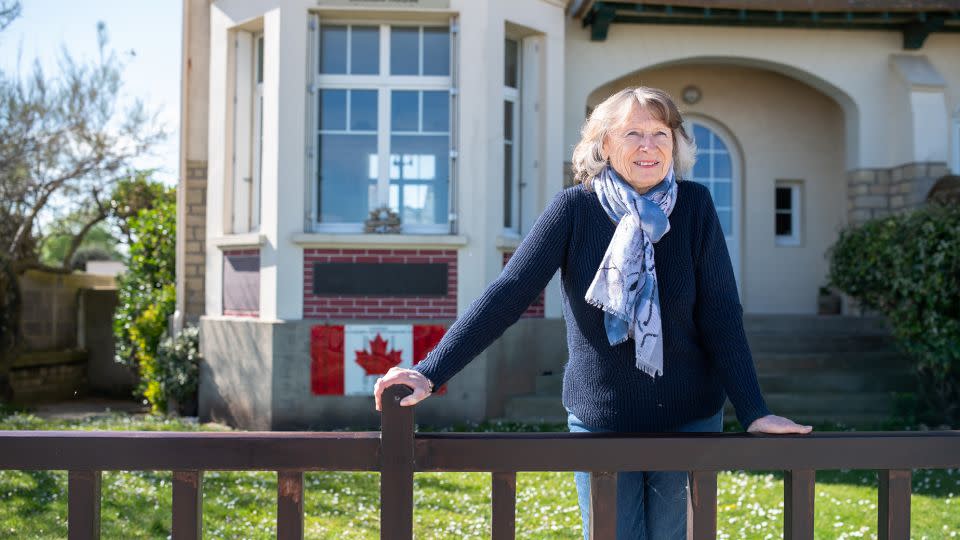
“Even in my own family, I’ve been criticized … how could I open the door to strangers?” Nicole Hoffer said. “I’d say, well, if the foreigners hadn’t come, you might not be here today. They brought us freedom, many at the risk of their lives.”
The Hoffers typically found the first moments of an encounter particularly moving. As veterans sat down for the first time, they’d look out the window as if they were in a film that had taken a decades-long pause, Nicole Hoffer said. Then they would share stories that even their families and friends had never heard.
With each meeting, the story of the Hoffer family vacation home emerged, piece by piece.
The family learned that when Canadian troops landed at H-Hour, the beginning of the amphibious assault, the Germans that were inside the home fired at them from a machine gun mounted on a bench and aimed outside the front window. Many of the soldiers who were not gunned down hid behind a beach wall near the home, from which they were able to regroup and expel the German troops from the house.
Many soldiers who return, Nicole Hoffer said, are surprised to find the wall gone, buried by sand over the years. The house, however, still looks mostly the same.
A summer home filled with war memories
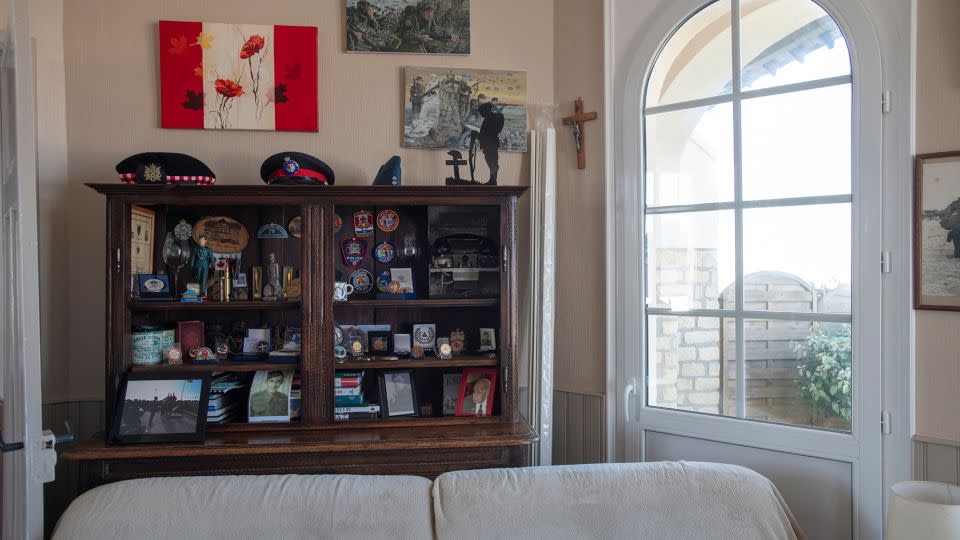
The Hoffers found that as veterans kept coming back over the years, more and more began to bring souvenirs for them, so many that their summer home is now effectively doubles as a museum. Their guestbook has collected hundreds – if not thousands – of signatures from veterans and their families returning to Juno Beach. One signer, Ernie Kells, even apologized for tossing grenades into their basement to flush out German troops.
Donated medals, flags, paintings and other keepsakes adorn the walls, including a cross featuring a Jesus icon whose arm had apparently been blown off while in a soldier’s pocket. The man had found the cross intact in a nearby house, and shrapnel that hit it may have saved his life. Years later, on his death bed, the man had asked his family to return the cross to the Hoffer’s home.
“In the house, you find a lot of memories,” she said.
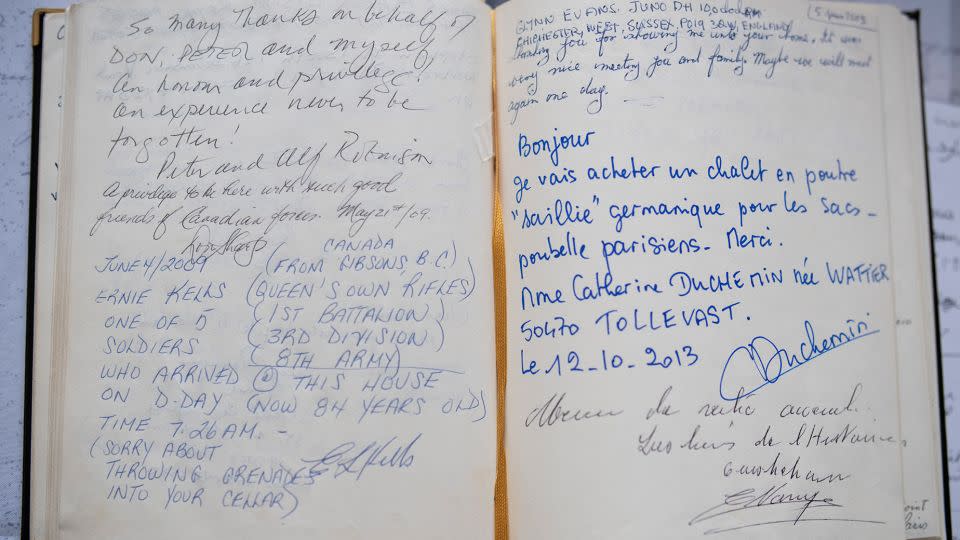
The Hoffers eventually began hosting their own ceremony to honor Canada’s fallen soldiers. About a week before June 6, they light a paraffin lantern and leave it burning on the balcony. Then on the evening of the anniversary, bagpipers play as the lamp is tossed into the sea, while guests place flowers and crosses where the water meets the sand.
Herve Hoffer was responsible for throwing the lamp himself until his sudden death in 2017, To honor his memory, Nicole Hoffer has opened the house to even more veterans than when he was alive.
“Now there’s trips, entire buses who come and ask if we can open the house,” she said.
For the 80th anniversary of D-Day this year, Hoffer is expecting a larger crowd. Not only will there be the usual contingent of visitors to her home, but the west side of the house will open to the public for the first time since being purchased by the local government. It is hosting an exhibit featuring the testimony of French men and women who lived through D-Day as children.
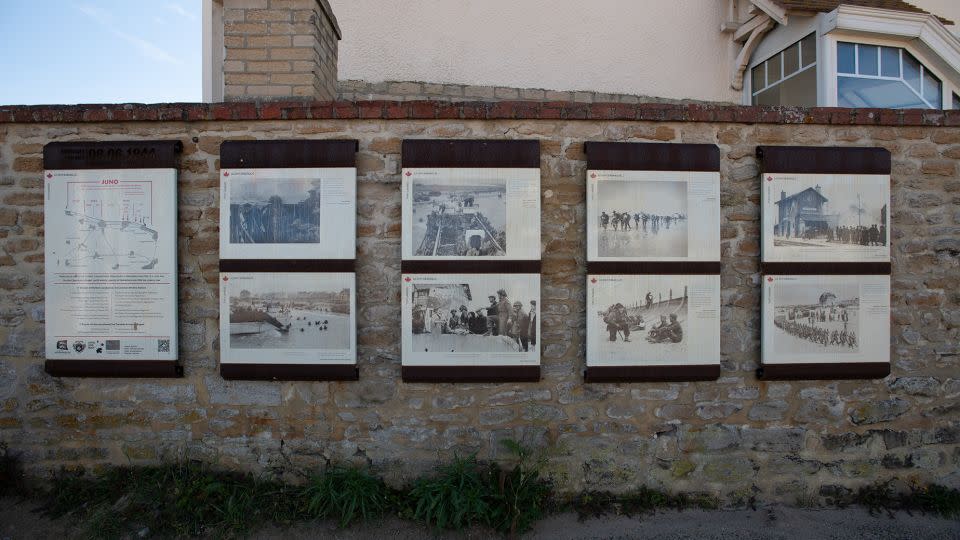
For more CNN news and newsletters create an account at CNN.com

 Yahoo News
Yahoo News 
